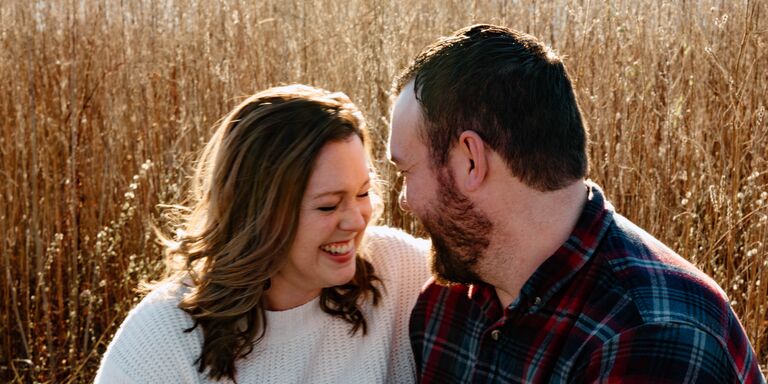(a) Discovering abilities
I obtained several bumble-bee (Bombus terrestris dalmatinus) colonies, for every single with which has 3040 professionals, of Koppert Physiological Systems (Berkel dentro de Rodenrijs, Holland). Most of the experts was basically uniquely marked to your thorax having designated, colored tags (Opalith tags; Religious Graze Kg, Germany). Which invited individuals to feel accurately known both in research learning studies and you may career foraging examples.
New bees were pre-trained to forage regarding 20 bicoloured, blue and you will red, fake herbs into the a laboratory airline stadium. The newest square, bicoloured flowers were made out of one or two halves (for every single several?24 mm): one yellow (Perspex Yellow 260) while the almost every other blue (Perspex Blue 727). During the pre-degree, the bicoloured plants was in fact compensated with 50% (w/w) sucrose provider bringing in the past colour-naive bees with the same chance to affiliate one another colours having award (Raine et al. 2006b). Bees doing at the least four successive foraging bouts towards bicoloured plants was selected for training. Such foragers was indeed taught in person, inside a trip arena with 10 blue (Perspex Blue 727) and you can 10 yellow (Perspex Yellow 260) fake flowers (per 24?24 mm). Red vegetation was indeed satisfying (per contained fifteen ?l from fifty% (w/w) sucrose service), if you are blue plants had been empty (unrewarding). Bees was basically considered to be Afrika kadД±n personel going for a flower when they either approached (inspected) or arrived in it. Landing to the a flower don’t fundamentally produce a feeding (probing) knowledge. For this reason, before probing a rewarding (yellow) flower, bees you can expect to like each other reddish/fulfilling or bluish/unrewarding vegetation because of the addressing or landing on it (without probing). Choosing a yellow (rewarding) flower try considered to be correct’, if you find yourself going for a blue (unrewarding) flower was considered getting an enthusiastic error’. I recorded the choice sequence from each bee from the go out they very first joined the trip arena. Tape the rose options for for every single bee stopped after they had made 99 flower alternatives after the first time it probed a good fulfilling (yellow) flower (Raine ainsi que al. 2006b). For this reason, per bee made at the least 100 rose choices, such as the very first time it probed a worthwhile flower, and additionally people alternatives made before this earliest probing knowledge.
Herbs was changed and their ranks re-randomized ranging from foraging bouts to prevent bees playing with scent scratches or past rose positions because the predictors off reward. Rose colour were chose to make sure that bees needed to overcome the strong, unlearned preference to own bluish, prior to accompanying among the innately minimum favoured colors (yellow) which have award (Chittka ainsi que al. 2004; Raine mais aussi al. 2006a). Fifteen bees was indeed instructed of for each nest (i.age. 180 bees altogether) ranging from cuatro and you can . Thorax thickness measurements had been drawn for each ones bees since a way of measuring system proportions. Controlled illumination getting research studies try provided by highest-frequency neon lights (TMS 24F lamps which have 4.step 3 kHz ballasts (Philips, Holland) fitted that have Activa daylight tubes (Osram, Germany)) so you’re able to simulate sheer daylight above the bee flicker blend regularity.
(b) Studying contours
The starting point for each bee’s learning curve was the proportion of errors made (blue flowers chosen) before the bee first probed a rewarding (yellow) flower. For bees making fewer than five flower choices (either by approaching or landing on them) before probing a rewarding flower (n=53), we used the colony mean proportion of errors (calculated from bees making five or more such choices). Flower choices made by each bee after (and including) the first time it probed a rewarding (yellow) flower were evaluated as the number of errors (blue flowers chosen) in each group of 10 choices. Learning curves (first-order exponential decay functions: y=y0+Ae ?x/t ) were fitted to these 11 data points (i.e. the start pointing and subsequent 10 groups of 10 flower choices) for each individual bee, using Microcal Origin (Chittka et al. 2004; Raine et al. 2006b), to capture the dynamic nature of the learning process. Here, x is the number of flower choices the bee made, starting with the first time it probed a yellow flower, and y is the number of errors. The saturation performance level (y0) is the number of errors made by a bee after finishing the learning process, i.e. when reaching a performance plateau. The decay constant (t) is a measure of learning speed: high values of t correspond to slow learning, whereas lower t values indicate faster learners. A is the curve amplitude: the maximum displacement (height) of the curve above y0. Both amplitude (A) and saturation performance (y0) were constrained between 0 and 10 for curve fitting. Eight (out of 180) bees showed no appreciable improvement in performance during the task, and the software generated learning curves’ that were essentially horizontal lines. These bees were excluded from subsequent analyses because their t values were either very high (>400) or negative.

